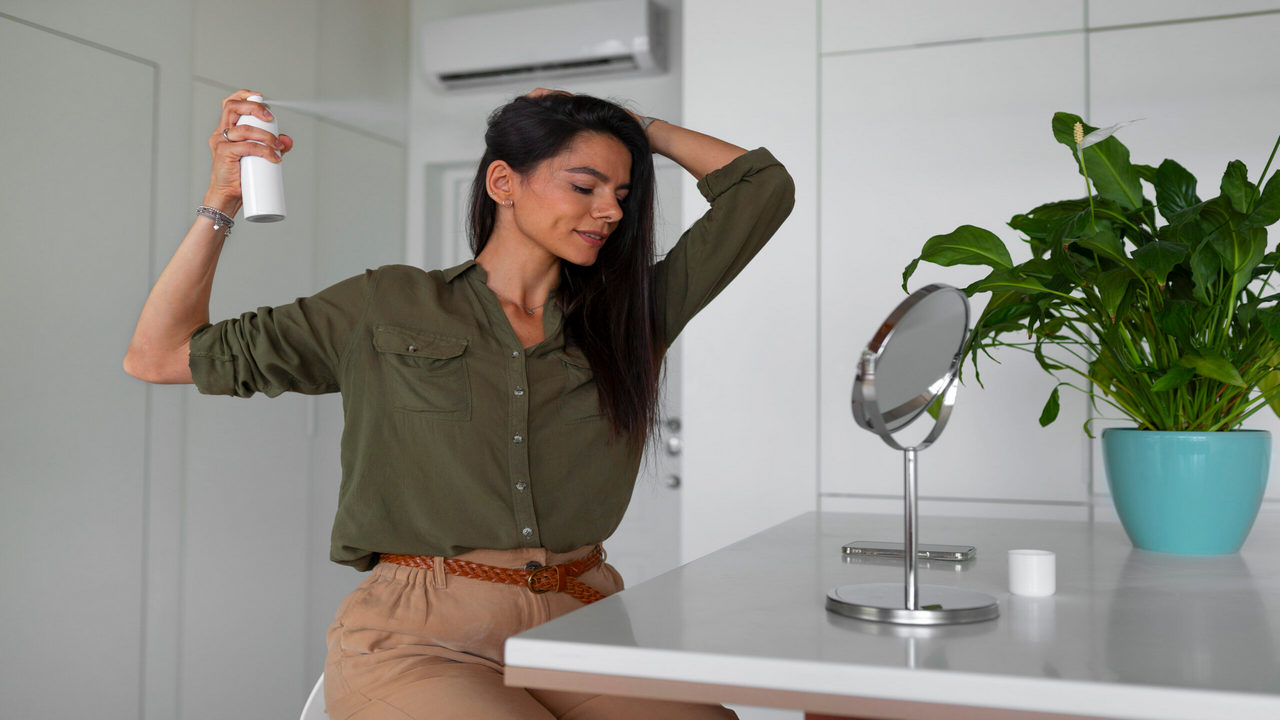Introduction to Heat Protectant
Heat protectants are a necessity when you are using a flat iron, curling wand, and blow dryer on a regular basis. The magical shield to heat styling tools is that of using a heat protection spray or serum.

Why Heat Styling is Damaging
Heat (particularly heat over 350°F/175°C) dissolves the natural keratin in hair, resulting in dryness, split ends, breakage, and frizz. Hairs can lose moisture and elasticity and become more susceptible to permanent damage.
What is a Heat Protectant?
It is any product, usually in spray, serum or cream form, that prevents your hair and the hot styling tool coming into contact with one another. It will minimize water loss, avoid breakage and leave your strands looking smooth and shiny.
How Does Heat Protectant Work?
It creates a thin layer on the hair strand for an even heat distribution and reduces direct heat contact.
The Science Behind the Shield
Most of them include silicones such as dimethicone or cyclomethicone that cover the hair and protect against elevated temperatures. Others include natural oils, proteins or polymers that fortify the hair structure.
Common Ingredients in Heat Protectants
- Silicones -endows smoothness and heat resistance.
- Hydrolyzed Proteins -Fortify hair internally.
- Glycerin or Propylene Glycol- Keep wet
- Natural oils such as argan or coconut oil- Add softness and protect.
Types of Heat Protectants
Spray
It is lightweight, easy to apply and it suits fine or oily hair.
Serum
Thicker, more for frizz fighting and added shine—great for thick or coarse hair.
Cream
Nourishing and moisturizing. Suitable to dry, curly, or coily hair types.
Oil-Based
Will be nutritious food Work in small amounts on fine hair, fantastic on thick hair.
How to Use Heat Protectant Properly
Step-by-Step Application Guide
- After you wash your hair, let it dry with a towel.
- Apply a little of this to the mid-lengths to ends.
- Comb to share out.
- Allow to absorb or dry a little bit, as necessary
- Use your hot tool to style.
Mistakes to Avoid
- Applying an excess of the product (welcome to greasy appearance).
- Not applying on dry hair prior to straightening.
- Their not waiting a few seconds before styling
Protecting Your Hair: A Guide to Choosing the Right Heat Protectant
For Fine Hair
Use light sprays-look at the label and see that it says weightless or volumizing.
For Curly or Coily Hair
Cream- or oil-based protectants will maintain moisture and the shape of curls.
For Thick or Coarse Hair
Select serums and creams that are hydrating like shea butter.
Color-Treated or Damaged Hair
Purchase products that contain keratin, UV protection, or amino acids.
Best Heat Protectants in the Market
Luxury Heat Protectants
- Oribe Royal Blowout Heat Styling Spray – A celeb favorite.
- ghd Heat Protect Spray – Trusted by stylists worldwide.
Drugstore Favorites
- Tresemme Thermal Creations Heat Tamer Spray: An affordable and effective option.
- L’Oréal Paris Sleek It Iron Straight Heatspray – Lightweight and long-lasting.
Natural or DIY Options
- Aloe vera, grapeseed oil, and coconut oil can offer a little bit of protection- it can be used when you are in a bind but don’t expect salon quality protection.
Myths Busted Today
“Heat Protectants Eliminate All Damage”
False. They minimize damage but will not make 450°F safe.
“You Only Need It for Flat Irons”
Nope. Even blow driers and curling brushes can make your hair heat-damaged.
“More Product Means More Protection”
An excessive amount of product will have your hair looking and feeling weighed down and oily. More is less.
Benefits of Regularly Using Heat Protectant
- Reduces splitting and breakage of hair
- Aids in in Greater moisture
- Makes hair soft, smooth and manageable
- Increases the effect ofay boat styling
- Extends the life of hair colored
How Often Should You Use Heat Protectant?
Apply this whenever you use heat–never omit it A simple blow-dry session has to be protected as well.
Heat Protectant for Men – Yes, It Matters!
Men with medium to long hair and who blow dry or straighten should also use heat protectant. Don’t miss!
Can Heat Protectant Be Used with Air Drying or Blow Drying?
Absolutely. Although it is the most relevant prior to the application of hot tools, some heat protectants also act as leave-ins and anti-frizz serums, particularly in the process of blow drying.
DIY Heat Protectant – Is It Safe or Effective?
Coconut oil, argan oil and aloe vera can partially save your hair, but homemade mixtures will not be able to compete with professional heat protectants. Use DIYs only when the last resorts
FAQs
Yes, so long as you do it daily with heat. If you're not using heat, then no need for it.
Very much so, particularly so long as the product is labeled as being safe to use on damp or towel-dried hair.
Absolutely. Most have a life span of 12-24 months. Sniff test or sniff test when in uncertain of the label
Yes, but don't overlayer. This should be applied before gels, or mousses.
Warm it to 375°F/190°C so as not to burn it, typically colored or delicate hair.
Mayank Rawat
Certified Skincare Consultant and passionate researcher, I specialize in exploring skincare ingredients and haircare actives. Always eager to stay ahead of trends, I continuously update my knowledge to bring science-backed solutions. Dedicated to helping others achieve healthy skin and hair through expertise and innovation.